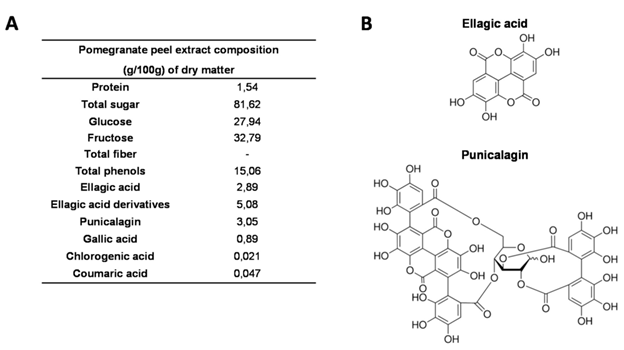Antimicrobial finish on textiles using plant extracts
Various natural anti-microbial agents for application on textiles have been explored in this article.
The plant extract treated fabrics were subjected to the antimicrobial activity test against the E-coli and S.aureus bacteria and also the finished samples have been analyzed for their durability of the finish by standard methods. There were no bacteria found on the surface of the treated fabrics and shows an appreciable zone of inhibition against both gram-positive and gram-negative bacteria. The combinatorial plant extracts show a very good zone of inhibition when compared to individually treated fabrics. The treated fabrics also have greater durability. The finish which is applied to the fabric did not affect any physical properties of the fabric. Since these plants are extensively available in the market, the opportunity for implementing this antimicrobial finish in the textile industry is high.
Processing of fabric with different plant extracts
-
Papaya (Seed and leaf)
![papaya-plant]()
The papaya seed and leaves were collected and washed thoroughly. It was dried for 15 days and ground to powder form using a mixer. 5g of powder was mixed in 100ml of distilled water while for solvent extract 70% methanol was used. The solvent extract was kept in the water bath for 1hr at 400C. The extract was then filtered using filter paper to reduce the volume to 10% and the filtrate was collected. It has not applied to the textile substrate due to the absence of OH groups in ortho position which is responsible for binding the extract to the fabric.
-
Aloe Vera
![aloe-vera-plants]()
The Aloe Vera gel was collected and dried in the air-dry machine at a temperature of 50°C for three hours. The dried gel was soaked with methanol for one week and it was filtrated through filter paper. The methanol was then evaporated using rotary evaporator machine and the extracted was obtained. The bleached cotton fabric was dipped in the extract for five minutes and it was padded. The treated fabric was dried at 800C for 3minutes and it was cured at 1100C for 2minutes. -
Neem
The methanolic extract was carried out using the Neem powder and it was left for 48 hours. Then, the methanol was evaporated using rotary evaporated. The extract was applied to the fabric using dip padding technique.
-
Banana (Leaf and Peel)
100g of banana peel was cut into small pieces and boiled in 1L in a solution of 0.1% NaOH. The solution was filtered using filter paper and the extract was collected. The banana peel extraction was used in the dyeing bath at 800C for 90 minutes under continuous stirring. After dyeing, the fabrics were washed with water and it was air-dried.
-
Mango
The leaves were collected and washed thoroughly with water. It was dried under direct sunlight and it was ground into fine powder using a grinding machine. The extraction was carried out using aqueous extraction method at 980C for 60 minutes. The extract was filtered using filter paper three times to get a clear solution. Dyeing was carried out at 800C for 60 minutes at MLR 1:50 in the water bath. The dyed fabric was dried at 800C for two minutes.
-
Pomegranate
![pomegranate]() The pomegranate was collected and the rind part alone was separated. The pomegranate rind was dried for 3 days and it was ground to fine powder. The ethanolic extraction was done using the pomegranate powder and it left for 5 hours. The extract was collected and the solvent was evaporated using a rotary vacuum evaporator. The dyeing of fabric with extract was carried out at 10% of the weight of the fabric for 30 minutes at 800C on MLR 1:30. After dyeing, the fabric is washed with cold water and dried.
The pomegranate was collected and the rind part alone was separated. The pomegranate rind was dried for 3 days and it was ground to fine powder. The ethanolic extraction was done using the pomegranate powder and it left for 5 hours. The extract was collected and the solvent was evaporated using a rotary vacuum evaporator. The dyeing of fabric with extract was carried out at 10% of the weight of the fabric for 30 minutes at 800C on MLR 1:30. After dyeing, the fabric is washed with cold water and dried.![pomegranate-peel-extract-composition]()
Structure and composition of pomegranate peel (Punica granatum) ![antibacterial-activity]()
Table 1: Antibacterial activity of pomegranate peel





 The pomegranate was collected and the rind part alone was separated. The pomegranate rind was dried for 3 days and it was ground to fine powder. The ethanolic extraction was done using the pomegranate powder and it left for 5 hours. The extract was collected and the solvent was evaporated using a rotary vacuum evaporator. The dyeing of fabric with extract was carried out at 10% of the weight of the fabric for 30 minutes at 800C on MLR 1:30. After dyeing, the fabric is washed with cold water and dried.
The pomegranate was collected and the rind part alone was separated. The pomegranate rind was dried for 3 days and it was ground to fine powder. The ethanolic extraction was done using the pomegranate powder and it left for 5 hours. The extract was collected and the solvent was evaporated using a rotary vacuum evaporator. The dyeing of fabric with extract was carried out at 10% of the weight of the fabric for 30 minutes at 800C on MLR 1:30. After dyeing, the fabric is washed with cold water and dried.
